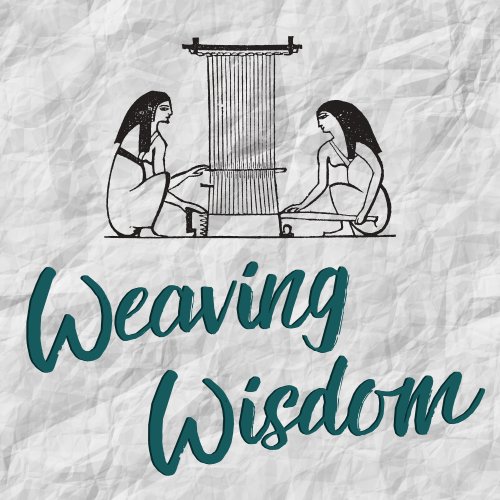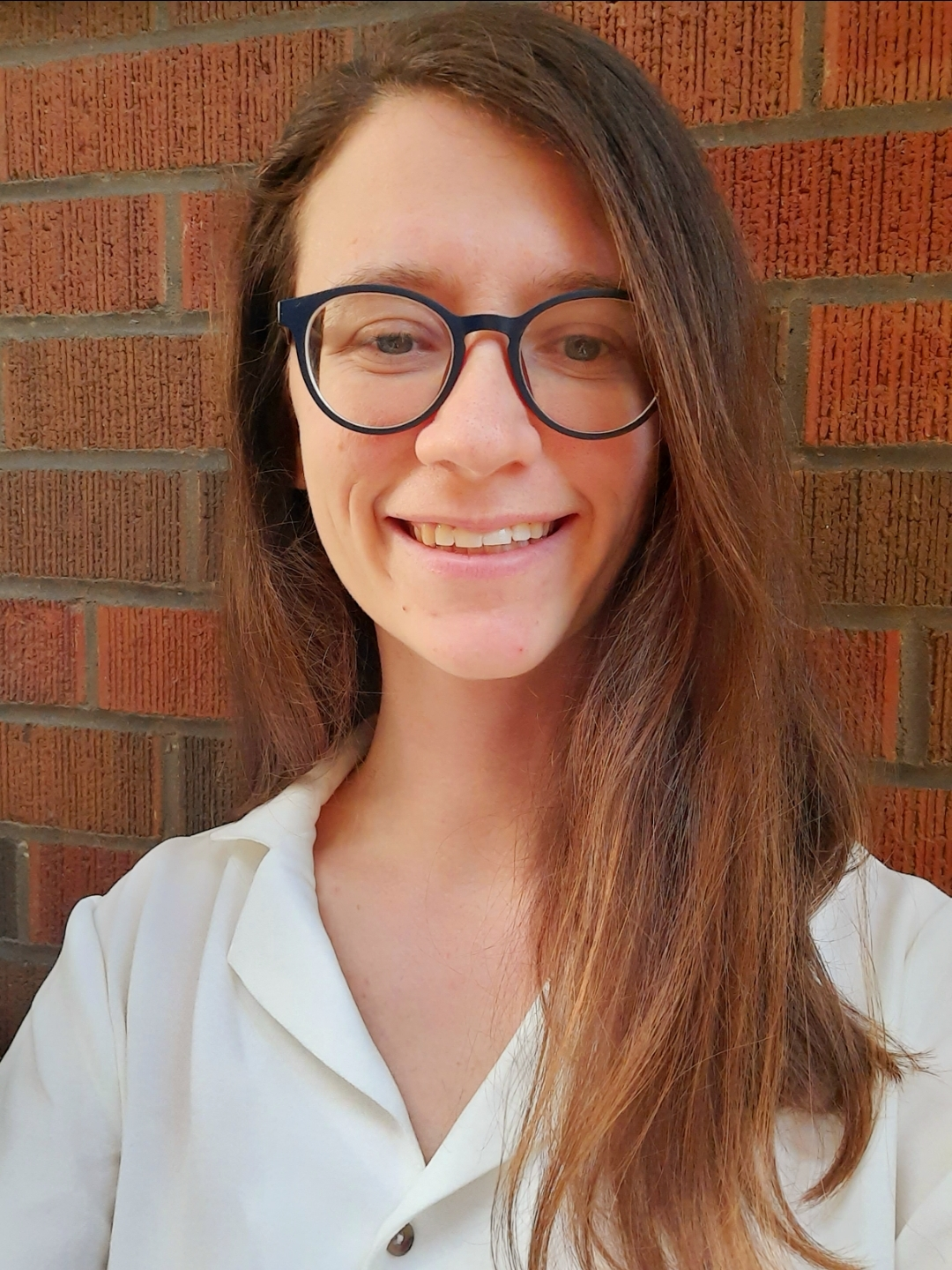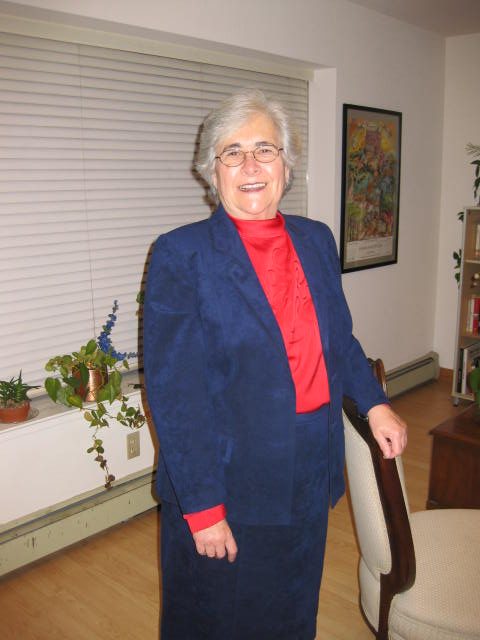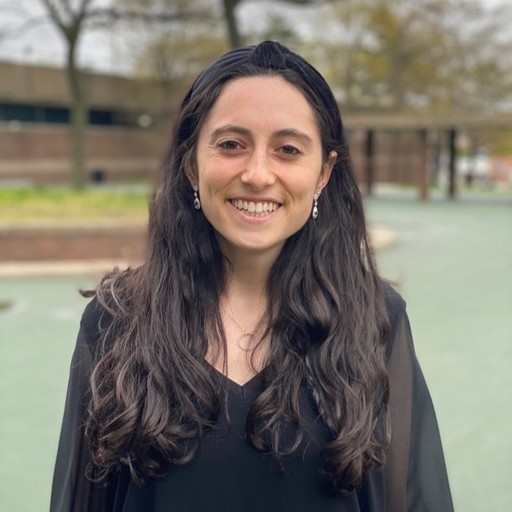Eruvin 96
וְאִיבָּעֵית אֵימָא: דְּכוּלֵּי עָלְמָא לָצֵאת לָא בָּעֵי כַּוּוֹנָה, וְהָכָא לַעֲבוֹר מִשּׁוּם ״בַּל תּוֹסִיף״ קָמִיפַּלְגִי, דְּתַנָּא קַמָּא סָבַר: לַעֲבוֹר מִשּׁוּם ״בַּל תּוֹסִיף״ לָא בָּעֵי כַּוּוֹנָה. וְרַבָּן גַּמְלִיאֵל סָבַר: לַעֲבוֹר מִשּׁוּם ״בַּל תּוֹסִיף״ בָּעֵי כַּוּוֹנָה.
And if you wish, say instead that everyone agrees that to fulfill a mitzva one does not need intent, and here they disagree with regard to the condition needed to violate the prohibition: Do not add to mitzvot of the Torah. As the first tanna holds that one does not need intent to violate the prohibition: Do not add to mitzvot. One who dons another pair of phylacteries transgresses the prohibition against adding to mitzvot even if he does not don them with the intention of fulfilling the mitzva. And Rabban Gamliel holds that in order to violate the prohibition: Do not add to mitzvot, one needs intent to perform a mitzva. Since in this case one’s intention is merely to move the phylacteries to a safer place, he may don a second pair.
וְאִיבָּעֵית אֵימָא: אִי דִּסְבִירָא לַן דְּשַׁבָּת זְמַן תְּפִילִּין — דְּכוּלֵּי עָלְמָא לָא לַעֲבוֹר בָּעֵי כַּוּוֹנָה וְלָא לָצֵאת בָּעֵי כַּוּוֹנָה.
And if you wish, say instead that the dispute may be explained as follows. If we were to maintain that Shabbat is a fit time for donning phylacteries, everyone would agree that one does not need intent to violate the prohibition against adding to mitzvot, nor does one need intent to fulfill a mitzva. In this case, one’s intention has no bearing on his action.
וְהָכָא בְּ״לַעֲבוֹר שֶׁלֹּא בִּזְמַנּוֹ״ קָמִיפַּלְגִי. תַּנָּא קַמָּא סָבַר: לָא בָּעֵי כַּוּוֹנָה. וְרַבָּן גַּמְלִיאֵל סָבַר: לַעֲבוֹר שֶׁלֹּא בִּזְמַנּוֹ בָּעֵי כַּוּוֹנָה.
However, here, they disagree with regard to the condition for violating the prohibition against adding to a mitzva not in its proper time, i.e., when a mitzva is performed not at its prescribed time. The first tanna holds that if the act of a mitzva is performed not in its proper time, one does not need intent; that is, even if one does not intend to perform the mitzva he nonetheless violates the prohibition against adding to mitzvot by his action alone. Consequently, in this case, a person may not don more than one pair of phylacteries. And Rabban Gamliel holds that to violate the prohibition against adding to a mitzva not in its proper time, one needs intent to fulfill the mitzva. Without such intent one does not violate the prohibition, and therefore in this case he may don a second pair of phylacteries.
אִי הָכִי, לְרַבִּי מֵאִיר זוּג אֶחָד נָמֵי לָא.
With regard to this last explanation the Gemara asks: If so, according to the opinion of Rabbi Meir one should not even don one pair of phylacteries. According to Rabbi Meir’s opinion, one who does so violates the prohibition against adding to mitzvot merely by donning one pair, since he is fulfilling the mitzva of phylacteries at a time when he is not commanded to do so.
וְעוֹד: הַיָּשֵׁן בַּשְּׁמִינִי בְּסוּכָּה יִלְקֶה! אֶלָּא מְחַוַּורְתָּא כִדְשַׁנִּינַן מֵעִיקָּרָא.
And furthermore, according to this opinion, one who sleeps in a sukka on the Eighth Day of Assembly should be flogged for violating the prohibition against adding to mitzvot, as he adds to the mitzva of: “You shall dwell in booths for seven days” (Leviticus 23:42). Yet the Sages instituted that outside of Eretz Yisrael, Jews must observe Sukkot for eight days, even though one who sleeps in a sukka on the eighth night outside of Eretz Yisrael transgresses a Torah law. Rather, it is clear as we originally answered, i.e., you must accept one of the other explanations.
וּמַאן שָׁמְעַתְּ לֵיהּ שַׁבָּת זְמַן תְּפִילִּין? רַבִּי עֲקִיבָא. דְּתַנְיָא: ״וְשָׁמַרְתָּ אֶת הַחֻקָּה הַזֹּאת לְמוֹעֲדָהּ מִיָּמִים יָמִימָה״. ״יָמִים״ — וְלֹא לֵילוֹת. ״מִיָּמִים״ — וְלֹא כׇּל יָמִים, פְּרָט לְשַׁבָּתוֹת וְיָמִים טוֹבִים, דִּבְרֵי רַבִּי יוֹסֵי הַגְּלִילִי.
Since the topic of phylacteries was discussed, the Gemara continues to explore this issue. Whom did you hear who said that Shabbat is a fit time for donning phylacteries? It is Rabbi Akiva, as it was taught in a baraita with regard to the end of the section in the Torah beginning with: “Sanctify all firstborns to me” (Exodus 13:2), which deals with the mitzvot of the Paschal lamb and phylacteries: “And you shall observe this ordinance in its season from year [miyamim] to year” (Exodus 13:10), which indicates that these mitzvot apply during the days [yamim] and not during the nights. Furthermore, the letter mem in “from year” [miyamim] teaches: But not on all days; this excludes Shabbat and Festivals, on which phylacteries are not worn. This is the statement of Rabbi Yosei HaGelili.
רַבִּי עֲקִיבָא אוֹמֵר: לֹא נֶאֱמַר חוּקָּה זוֹ אֶלָּא לְעִנְיַן פֶּסַח בִּלְבַד.
Rabbi Akiva says: This ordinance is stated only with regard to the Paschal lamb, and it does not refer to phylacteries at all. According to Rabbi Akiva, there is no reason to refrain from donning phylacteries on Shabbat and Festivals.
וְאֶלָּא הָא דִּתְנַן: הַפֶּסַח וְהַמִּילָה מִצְוַת עֲשֵׂה — לֵימָא דְּלָא כְּרַבִּי עֲקִיבָא, דְּאִי רַבִּי עֲקִיבָא — כֵּיוָן דְּמוֹקֵי לָהּ בְּפֶסַח, לָאו נָמֵי אִיכָּא, כִּדְרַבִּי אָבִין אָמַר רַבִּי אִילְעַאי. דְּאָמַר רַבִּי אָבִין אָמַר רַבִּי אִילְעַאי: כׇּל מָקוֹם שֶׁנֶּאֱמַר ״הִשָּׁמֶר״ ״פֶּן״ וְ״אַל״ — אֵינוֹ אֶלָּא בְּלֹא תַּעֲשֶׂה!
The Gemara asks: But with regard to that which we learned in a mishna that the Paschal lamb and circumcision are positive mitzvot, let us say that this statement is not in accordance with the opinion of Rabbi Akiva. The reason for this claim is that if you say this teaching is in accordance with the opinion of Rabbi Akiva, since he establishes this verse as referring to the Paschal lamb, this would mean that in failure to bring this offering there is also the violation of a negative mitzva, in accordance with the principle that Rabbi Avin said that Rabbi Elai said. As Rabbi Avin said that Rabbi Elai said: Any place where it is stated: Observe, lest, or do not, this means nothing other than a negative mitzva, as these are negative terms. Consequently, the verse “You shall observe this ordinance,” which refers to the Paschal lamb, constitutes a negative mitzva.
אֲפִילּוּ תֵּימָא רַבִּי עֲקִיבָא, ״הִשָּׁמֶר״ דְּלָאו — לָאו, ״הִשָּׁמֶר״ דַּעֲשֵׂה — עֲשֵׂה.
The Gemara rejects this: Even if you say that Rabbi Akiva holds that no negative mitzva applies to the Paschal lamb, it is not difficult, as an additional principle must be taken into account. Although it is true that the term observe with regard to a negative mitzva indicates the presence of another negative mitzva; that same term observe with regard to a positive mitzva has the force of a positive mitzva, as the Torah is warning adherents to take special care in the observance of a mitzva. The word observe in connection with the Paschal lamb is an example of this type of positive mitzva.
וְסָבַר רַבִּי עֲקִיבָא שַׁבָּת זְמַן תְּפִילִּין הוּא?! וְהָתַנְיָא, רַבִּי עֲקִיבָא אוֹמֵר: יָכוֹל יַנִּיחַ אָדָם תְּפִילִּין בְּשַׁבָּתוֹת וְיָמִים טוֹבִים, תַּלְמוּד לוֹמַר: ״וְהָיָה לְךָ לְאוֹת עַל יָדְךָ״, מִי שֶׁצְּרִיכִין אוֹת, יָצְאוּ אֵלּוּ — שֶׁהֵן גּוּפָן אוֹת.
The Gemara returns to the issue at hand: And does Rabbi Akiva really hold that Shabbat is a time for donning phylacteries? Wasn’t it taught in a baraita that Rabbi Akiva says: I might have thought that a person should don phylacteries on Shabbatot and Festivals. Therefore, the verse states: “And it shall be for a sign for you on your arm, and for a remembrance between your eyes, so that God’s law shall be in your mouth; for with a strong arm God brought you out of Egypt” (Exodus 13:9). The obligation to don phylacteries applies when Jews require a sign to assert their Judaism and their status as the Chosen People, i.e., during the week, excluding Shabbat and Festivals, as they are themselves signs of Israel’s status as the Chosen People and a remembrance of the exodus from Egypt. Consequently, no further sign is required on these days. This teaching proves that Rabbi Akiva maintains that Shabbat is not a fit time for donning phylacteries.
אֶלָּא הַאי תַּנָּא הוּא דְּתַנְיָא: הַנֵּיעוֹר בַּלַּיְלָה, רָצָה — חוֹלֵץ, רָצָה — מַנִּיחַ, דִּבְרֵי רַבִּי נָתָן. יוֹנָתָן הַקִּיטוֹנִי אוֹמֵר: אֵין מַנִּיחִין תְּפִילִּין בַּלַּיְלָה. מִדְּלַיְלָה לְתַנָּא קַמָּא זְמַן תְּפִילִּין — שַׁבָּת נָמֵי זְמַן תְּפִילִּין.
Rather, it is this tanna, Rabbi Natan, who maintains that Shabbat is a fit time for donning phylacteries, as it was taught in a baraita: With regard to one who is awake at night, if he wishes he may remove his phylacteries, and if he wishes he may continue to don them, and he need not worry about violating the prohibition against adding to mitzvot. This is the statement of Rabbi Natan. Yonatan HaKitoni says: One may not don phylacteries at night. From the fact that according to the first tanna, Rabbi Natan, night is a fit time for phylacteries, it may be inferred that Shabbat, too, is a time for donning phylacteries, as Rabbi Natan evidently does not accept Rabbi Yosei HaGelili’s limitation based on the phrase: From year to year.
דִּילְמָא סְבִירָא לֵיהּ לַיְלָה זְמַן תְּפִילִּין הוּא, שַׁבָּת לָאו זְמַן תְּפִילִּין הוּא. דְּהָא שָׁמְעִינַן לֵיהּ לְרַבִּי עֲקִיבָא דְּאָמַר: לַיְלָה זְמַן תְּפִילִּין הוּא, שַׁבָּת לָאו זְמַן תְּפִילִּין הוּא!
The Gemara rejects this contention: This is not a conclusive proof, as perhaps he holds that although night is a fit time for phylacteries, Shabbat is not a fit time for phylacteries. As we have heard that Rabbi Akiva said that night is a time for phylacteries, because he does not accept the limitation of “from days to days,” and yet he maintains that Shabbat is not a time for phylacteries, as no sign is required on Shabbat. It is therefore possible that Rabbi Natan holds the same opinion.
אֶלָּא הַאי תַּנָּא הוּא דְּתַנְיָא: מִיכַל בַּת כּוּשִׁי הָיְתָה מַנַּחַת תְּפִילִּין וְלֹא מִיחוּ בָּהּ חֲכָמִים, וְאִשְׁתּוֹ שֶׁל יוֹנָה הָיְתָה עוֹלָה לָרֶגֶל וְלֹא מִיחוּ בָּהּ חֲכָמִים. מִדְּלֹא מִיחוּ בָּהּ חֲכָמִים — אַלְמָא קָסָבְרִי מִצְוַת עֲשֵׂה שֶׁלֹּא הַזְּמַן גְּרָמָא הִיא.
Rather, we must say that it is this tanna who maintains that Shabbat is a time for phylacteries, as it was taught in a baraita: Michal, daughter of Kushi, King Saul, would don phylacteries, and the Sages did not protest against her behavior, as she was permitted to do so. And similarly, Jonah’s wife would undertake the Festival pilgrimage and the Sages did not protest against her practice. From the fact that the Sages did not protest against Michal’s donning phylacteries, it is apparent that these Sages hold that phylacteries is a positive mitzva not bound by time, i.e., it is a mitzva whose performance is mandated at all times, including nights and Shabbat. There is an accepted principle that women are obligated in all positive mitzvot not bound by time.
וְדִילְמָא סָבַר לַהּ
The Gemara rejects this contention: But perhaps that tanna holds
כְּרַבִּי יוֹסֵי, דְּאָמַר: נָשִׁים סוֹמְכוֹת רְשׁוּת.
in accordance with the opinion of Rabbi Yosei, who said: It is optional for women to place their hands on the head of a sacrificial animal before it is slaughtered. Although only men have this obligation, women may perform that rite if they wish. Similarly, women may perform other mitzvot that they have no obligation to fulfill.
דְּאִי לָא תֵּימָא הָכִי, אִשְׁתּוֹ שֶׁל יוֹנָה הָיְתָה עוֹלָה לָרֶגֶל וְלֹא מִיחוּ בָּהּ, מִי אִיכָּא לְמַאן דְּאָמַר רֶגֶל לָאו מִצְוַת עֲשֵׂה שֶׁהַזְּמַן גְּרָמָא הוּא? אֶלָּא קָסָבַר רְשׁוּת, הָכָא נָמֵי רְשׁוּת.
As, if you do not say so, that this tanna holds in accordance with the opinion of Rabbi Yosei, the baraita states that Jonah’s wife would ascend to Jerusalem for the Festival pilgrimage and the Sages did not reprimand her. Is there anyone who says that the mitzva of Festival pilgrimage is not a time-bound positive mitzva and that women are obligated to fulfill it? Rather, he holds that she did not embark on the pilgrimage as an obligation, but that it was optional; here, too, with regard to phylacteries, it is optional. Consequently, no proof can be cited from this baraita as to whether or not Shabbat is a fit time for phylacteries.
אֶלָּא הַאי תַּנָּא הִיא דְּתַנְיָא: הַמּוֹצֵא תְּפִילִּין, מַכְנִיסָן זוּג זוּג. אֶחָד הָאִישׁ וְאֶחָד הָאִשָּׁה, אֶחָד חֲדָשׁוֹת וְאֶחָד יְשָׁנוֹת, דִּבְרֵי רַבִּי מֵאִיר. רַבִּי יְהוּדָה אוֹסֵר בַּחֲדָשׁוֹת, וּמַתִּיר בִּישָׁנוֹת.
Rather, who is the tanna who maintains that Shabbat is a time for phylacteries? It is this tanna who taught the halakha, as it was taught in the Tosefta: One who finds phylacteries brings them in pair by pair, whether the finder is a man or whether she is a woman, and whether the phylacteries are new or whether they are old. This is the statement of Rabbi Meir. Rabbi Yehuda prohibits bringing in new phylacteries since they might merely be amulets in the form of phylacteries, but he permits bringing in old ones, which are certainly valid phylacteries.
עַד כָּאן לָא פְּלִיגִי אֶלָּא בַּחֲדָשׁוֹת וִישָׁנוֹת, אֲבָל בְּאִשָּׁה לָא פְּלִיגִי. שְׁמַע מִינַּהּ מִצְוַת עֲשֵׂה שֶׁלֹּא הַזְּמַן גְּרָמָא הוּא, וְכׇל מִצְוַת עֲשֵׂה שֶׁאֵין הַזְּמַן גְּרָמָא נָשִׁים חַיָּיבוֹת.
Analysis of this Tosefta indicates that Rabbi Meir and Rabbi Yehuda disagree only with regard to the issue of new phylacteries and old ones; however, with regard to a woman bringing in the phylacteries, they do not disagree that it is permitted. Learn from it that this tanna maintains that donning phylacteries is a positive mitzva not bound by time, and since women are obligated in every positive mitzva not bound by time, a woman may don these phylacteries and walk into the town.
וְדִילְמָא סָבַר לַהּ כְּרַבִּי יוֹסֵי, דְּאָמַר: נָשִׁים סוֹמְכוֹת רְשׁוּת? לָא סָלְקָא דַעְתָּךְ דְּלָא רַבִּי מֵאִיר סָבַר לַהּ כְּרַבִּי יוֹסֵי, וְלָא רַבִּי יְהוּדָה סָבַר לַהּ כְּרַבִּי יוֹסֵי
The Gemara attempts to refute this. But perhaps that tanna holds in accordance with the opinion of Rabbi Yosei, who said: It is optional for women to place their hands on the head of a sacrificial animal before it is slaughtered. Here too, perhaps it is optional for women to don phylacteries. The Gemara answers: This cannot enter your mind, as neither Rabbi Meir holds in accordance with the opinion of Rabbi Yosei, nor does Rabbi Yehuda hold in accordance with the opinion of Rabbi Yosei, as the Gemara proceeds to prove.
לָא רַבִּי מֵאִיר סָבַר לַהּ כְּרַבִּי יוֹסֵי, דִּתְנַן: אֵין מְעַכְּבִין אֶת הַתִּינוֹקוֹת מִלִּתְקוֹעַ. הָא נָשִׁים מְעַכְּבִין — וּסְתָם מַתְנִיתִין רַבִּי מֵאִיר.
Neither Rabbi Meir holds in accordance with the opinion of Rabbi Yosei, as we learned in a mishna: One need not prevent children from sounding the shofar on Rosh HaShana. Although there is an element of prohibition in sounding the shofar when there is no obligation to do so, since the children will one day be obligated to sound the shofar, one need not prevent them from doing so and learning. It may be inferred from here that one must prevent women from sounding the shofar. And an unattributed mishna is in accordance with the opinion of Rabbi Meir, indicating that according to Rabbi Meir, a woman does not even have the option of performing a time-bound positive mitzva.
וְלָא רַבִּי יְהוּדָה סָבַר לַהּ כְּרַבִּי יוֹסֵי, דְּתַנְיָא: ״דַּבֵּר אֶל בְּנֵי יִשְׂרָאֵל … וְסָמַךְ״, בְּנֵי יִשְׂרָאֵל סוֹמְכִין וְאֵין בְּנוֹת יִשְׂרָאֵל סוֹמְכוֹת. רַבִּי יוֹסֵי וְרַבִּי שִׁמְעוֹן אוֹמְרִים: נָשִׁים סוֹמְכוֹת רְשׁוּת.
Nor does Rabbi Yehuda hold in accordance with the opinion of Rabbi Yosei, as it was taught in the Sifra, the halakhic midrash on Leviticus. The verse states: “Speak to the sons of Israel…and he shall place his hands on the head of the burnt-offering” (Leviticus 1:2–4). By inference, the sons of Israel place their hands, but the daughters of Israel do not place their hands. Rabbi Yosei and Rabbi Shimon say: It is optional for women to place their hands on the head of a sacrificial animal before it is slaughtered.
וּסְתָם סִיפְרָא מַנִּי — רַבִּי יְהוּדָה.
And who is the author of an unattributed Sifra? It is Rabbi Yehuda. This teaching proves that Rabbi Yehuda maintains that women do not have the option of placing their hands on a sacrifice. Neither Rabbi Meir nor Rabbi Yehuda accepts Rabbi Yosei’s opinion that it is optional for women to perform time-bound positive mitzvot; therefore, the tanna who cited their opinions that a woman may bring in phylacteries on Shabbat maintains that the mitzva of phylacteries is not time-bound and is in effect even on Shabbat, which is why even women are obligated.
אָמַר רַבִּי אֶלְעָזָר: הַמּוֹצֵא תְּכֵלֶת בַּשּׁוּק, לְשׁוֹנוֹת — פְּסוּלוֹת, חוּטִין — כְּשֵׁרִין.
Rabbi Elazar said: With regard to one who one finds fabric dyed sky blue in the marketplace, if he found strips of combed and dyed wool they are unfit for use as ritual fringes. The sky blue threads used in ritual fringes must be spun and dyed for the purpose of the mitzva, and these strips might have been dyed for a different purpose. However, if one found sky blue threads, they are fit for use in ritual fringes, as it can be assumed they were prepared for that purpose.
מַאי שְׁנָא לְשׁוֹנוֹת, דְּאָמַר: אַדַּעְתָּא דִגְלִימָא צַבְעִינְהוּ? חוּטִין נָמֵי, נֵימָא: אַדַּעְתָּא דִגְלִימָא טְוִינְהוּ! בִּשְׁזוּרִים.
The Gemara asks: What is different about strips that renders them unfit? It is because Rabbi Elazar said: One dyed the strips with the intent to use them for a cloak. If so, with regard to threads as well, let us say: One spun them with the intent to use them for a cloak. In that case, they too would be deemed unfit. The Gemara answers: Here, it is referring to threads that are twisted, which are not typically used for weaving.
שְׁזוּרִים נָמֵי, נֵימָא: אַדַּעְתָּא דְשִׂיפְתָּא דִגְלִימָא עַיְיפִינְהוּ! בְּמוּפְסָקִין, דְּכוּלֵּי הַאי וַדַּאי לָא טָרְחִי אִינָשֵׁי.
The Gemara asks: With regard to twisted threads as well, let us say that one twisted them with the intent of attaching them to the hem of a cloak as ornamentation. The Gemara answers: It is referring to twisted threads that were cut into short strings suitable for use as ritual fringes, as people certainly do not exert themselves and fashion fringes of a cloak to resemble ritual fringes.
אָמַר רָבָא: וְכִי אָדָם טוֹרֵחַ לַעֲשׂוֹת קָמֵיעַ כְּמִין תְּפִילִּין? דִּתְנַן: בַּמֶּה דְּבָרִים אֲמוּרִים, בִּישָׁנוֹת. אֲבָל בַּחֲדָשׁוֹת — פָּטוּר.
Rava said: The assertion that people do not exert themselves is problematic, as by the same token, does a person exert himself to fashion an amulet in the form of phylacteries? Nevertheless, the Sages were concerned that an object that appears to be phylacteries might actually be a different object. As we learned in a mishna: In what case is this statement that one is permitted to carry phylacteries inside on Shabbat said? It is with regard to old phylacteries. However, with regard to new ones, he is exempt from the obligation to bring them in, as it is possible that they are not phylacteries but amulets in the form of phylacteries. Similarly, there should be concern lest people fashion items similar to objects used for a mitzva, even if exertion is involved.
אָמַר רַבִּי זֵירָא לְאַהֲבָה בְּרֵיהּ: פּוֹק תְּנִי לְהוּ: הַמּוֹצֵא תְּכֵלֶת בַּשּׁוּק, לְשׁוֹנוֹת — פְּסוּלִין, חוּטִין מוּפְסָקִין — כְּשֵׁירִין, לְפִי שֶׁאֵין אָדָם טוֹרֵחַ.
Rabbi Zeira said to his son Ahava: Go out and teach this baraita to the Sages. With regard to one who finds fabric dyed sky blue in the marketplace, if he finds strips, they are unfit for use in ritual fringes; however, if he finds threads cut into short strings, they are fit for use in ritual fringes because a person does not exert himself. Apparently, that is the reason for the halakha.
אָמַר רָבָא: וּמִשּׁוּם דְּתָנֵי לַהּ אַהֲבָה בְּרֵיהּ דְּרַבִּי זֵירָא כֵּיפֵי תְּלָא לַהּ?! וְהָתְנַן: בַּמֶּה דְּבָרִים אֲמוּרִים — בִּישָׁנוֹת, אֲבָל בַּחֲדָשׁוֹת — פָּטוּר!
Rava said: And because Ahava, son of Rabbi Zeira, taught this halakha, has he hung ornamental rings on that line of reasoning, i.e., does that constitute an absolute proof? The difficulty posed by Rava from the mishna is not resolved by the baraita, as we learned: In what case is this statement that one is permitted to carry phylacteries inside said? It is with regard to old phylacteries. However, with regard to new ones, he is exempt. Apparently, there is concern lest one exert himself to fashion an object similar to one used in a mitzva.
אֶלָּא אָמַר רָבָא: טָרַח וְלָא טָרַח — תַּנָּאֵי הִיא.
Rather, Rava said: The sources are not contradictory, as the question of whether one exerts himself or does not exert himself is the subject of a dispute between tanna’im. Some hold that one exerts himself as indicated by the mishna with regard to phylacteries, whereas others hold that one does not exert himself as stated with regard to sky blue dye.
דְּתַנְיָא: הַמּוֹצֵא תְּפִילִּין — מַכְנִיסָן זוּג זוּג, אֶחָד הָאִישׁ וְאֶחָד הָאִשָּׁה,
As it was taught in the Tosefta: One who finds phylacteries in a field brings them in to the town pair by pair, whether the finder is a man or a woman,





















